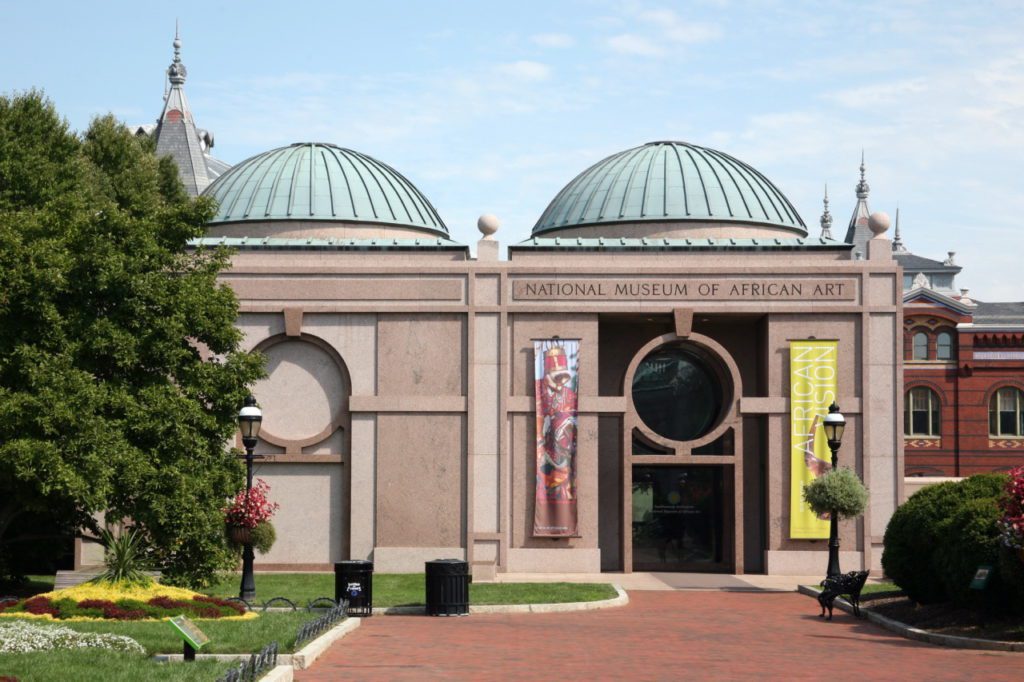The National Museum of African Art: An Incomparable Treasure
By • May 16, 2018 0 735

It’s not possible to understand Western art in the 20thcentury without African art. In fact, that is probably an understatement.
Without African art, there would be no 20th-century art as we know it. Were it not for the museums across Europe and America displaying their African curiosities, the great Western artists of the early modern era — Picasso, Matisse, Modigliani, Brancusi, Klee, Dubuffet, even Pollock — would never have developed their groundbreaking visual languages, which moved beyond the naturalism that had defined Western art since the Renaissance.
Interest in non-Western art by many of the most influential early modernists centered around the traditions of sub-Saharan Africa. For much of the 20thcentury, this interest was described as Primitivism, a woefully misguided term denoting a perspective of the non-Western as uncorrupted by Western progress and innovation.
Treated as artifacts of colonized cultures rather than as works of art, African sculptures, textiles and paintings were exhibited in dimly lit, musky galleries as curious, primitive artifacts. They once held so little value that they were displayed in pawnshops and flea markets — a history that bears a striking resemblance to that of dinosaur fossils.
Today, in the contemporary postcolonial era, the influence of traditional African aesthetics is so profoundly embedded in artistic practice that you often don’t even notice it. Go to any contemporary museum or art gallery in a Western city and you are bound to stumble across countless paintings by no-name artists that borrow from these traditions, almost untraceably far removed from their source. Much like the early modernists, most artists today that borrow freely from the visual lexicons of African art know nothing of its original meaning or function.
Should anyone take the effort to truly understand the aesthetic foundation of fine art over the past century, an exploration of African influences is essential. This is just one reason why the Smithsonian National Museum of African Art is such an incomparable treasure.
The arrival of its new director, acclaimed curator and cultural historian Augustus Casely-Hayford, seemed an appropriate moment to reflect upon the value of this unique institution’s presence in our city.
With more than 10,000 traditional African artworks in the collection, a casual walk through the permanent galleries has the potential to recalibrate one’s understanding of contemporary aesthetics. To see the origins of pictorial flatness and vivid earth-toned color palettes — which have been appropriated by every visual medium and style, from Cubism to comics and graphic design — is eye-opening.
The works are also stunningly beautiful. Elongated, harrowing Baule masks from Côte d’Ivoire. RadiantMaasai neckbands and ear ornaments from Kenya. Woven geometric Mende blankets from Sierra Leone. Copper bells from what is termed the Lower Niger Bronze Industry. Africa’s artistic production is too diverse and too gorgeous for a viewer to understand its breadth and depth without experiencing it personally.
Furthermore, in a wildly globalized art world, any distinct divide between Western and non-Western art is becoming increasingly irrelevant.
In this sense, contemporary art coming out of Africa covers a remarkable range of territory. Synthesizing the traditional influences of their ancestors, the modernist Western tradition that invigorated and distorted it and the social and cultural ramifications of everything from colonialism through the continent’s modern-day humanitarian and geopolitical burdens, contemporary African artists like El Anatsui, Victor Ekpuk, Yinka Shonibare and Jim Chuchu are bringing African art to the forefront of the 21stcentury.

